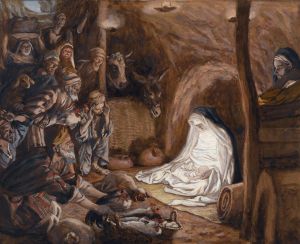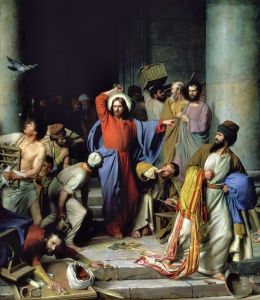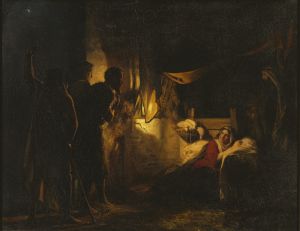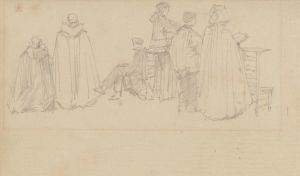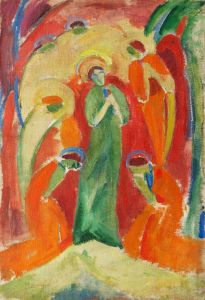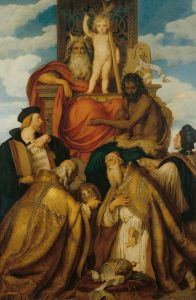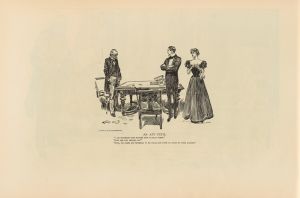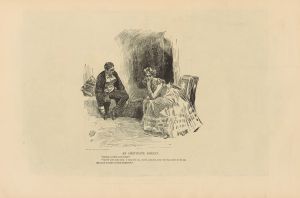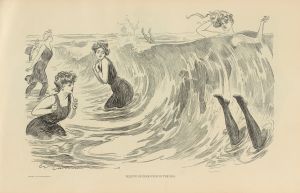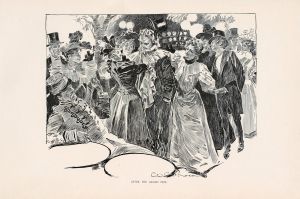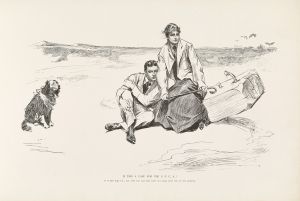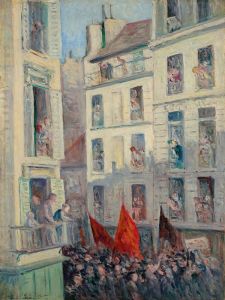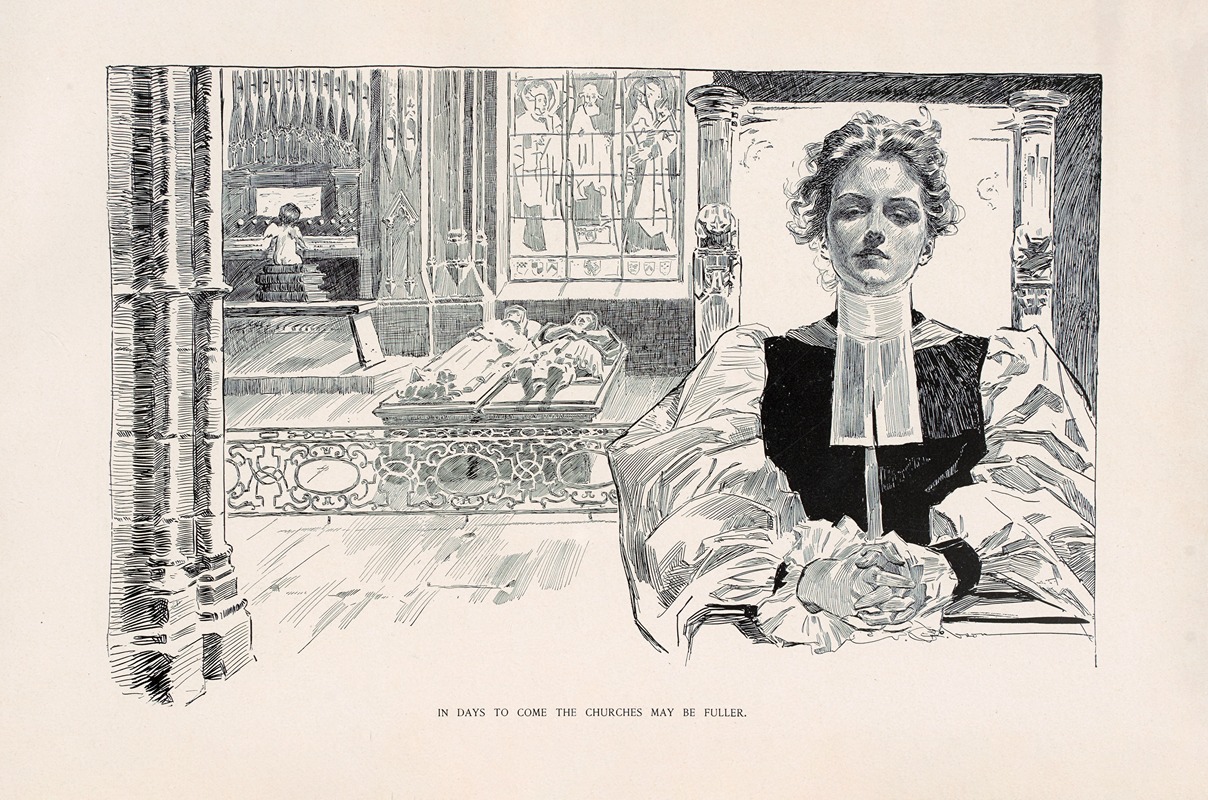
In days to come the churches may be fuller
A hand-painted replica of Charles Dana Gibson’s masterpiece In days to come the churches may be fuller, meticulously crafted by professional artists to capture the true essence of the original. Each piece is created with museum-quality canvas and rare mineral pigments, carefully painted by experienced artists with delicate brushstrokes and rich, layered colors to perfectly recreate the texture of the original artwork. Unlike machine-printed reproductions, this hand-painted version brings the painting to life, infused with the artist’s emotions and skill in every stroke. Whether for personal collection or home decoration, it instantly elevates the artistic atmosphere of any space.
Charles Dana Gibson was an influential American illustrator best known for his creation of the "Gibson Girl," a representation of the idealized American woman at the turn of the 20th century. His work appeared in numerous publications, and he became a prominent figure in the world of illustration. One of his notable works is the drawing titled "In Days to Come the Churches May Be Fuller."
"In Days to Come the Churches May Be Fuller" is a black-and-white illustration that reflects Gibson's keen ability to capture societal sentiments and trends through his art. The drawing was published in the early 20th century, a period marked by significant social and cultural changes in the United States. This era saw shifts in attitudes towards religion, gender roles, and societal norms, all of which Gibson often explored in his work.
The illustration depicts a scene within a church, with a focus on the congregation. Gibson's style is characterized by detailed line work and a strong sense of composition, both of which are evident in this piece. The title of the drawing suggests a contemplation on the future of religious institutions and their role in society. It implies a potential increase in church attendance, perhaps as a response to the changing times or as a reflection of societal needs.
Gibson's work often carried a subtle commentary on contemporary issues, and this piece is no exception. The early 20th century was a time when many Americans were grappling with rapid industrialization, urbanization, and the accompanying social changes. These shifts often led to a reevaluation of traditional values, including religious practices. Gibson's illustration may be seen as a reflection of these dynamics, capturing a moment of introspection about the place of religion in modern life.
The drawing is executed in Gibson's signature style, which combines realism with a touch of idealism. His figures are elegantly drawn, with attention to detail in their attire and expressions. This style helped to convey the nuances of the scene and the underlying message of the artwork. Gibson's ability to communicate complex ideas through simple yet powerful imagery is one of the reasons his work remains influential.
Charles Dana Gibson's illustrations, including "In Days to Come the Churches May Be Fuller," offer valuable insights into the cultural and social landscape of his time. His work not only entertained but also provoked thought and discussion among his audience. Today, his illustrations are appreciated not only for their artistic merit but also for their historical significance, providing a window into the values and concerns of early 20th-century America.
Overall, "In Days to Come the Churches May Be Fuller" is a testament to Gibson's skill as an illustrator and his ability to engage with the pressing issues of his day. Through his art, Gibson captured the complexities of American society, leaving a lasting legacy that continues to be studied and admired.





